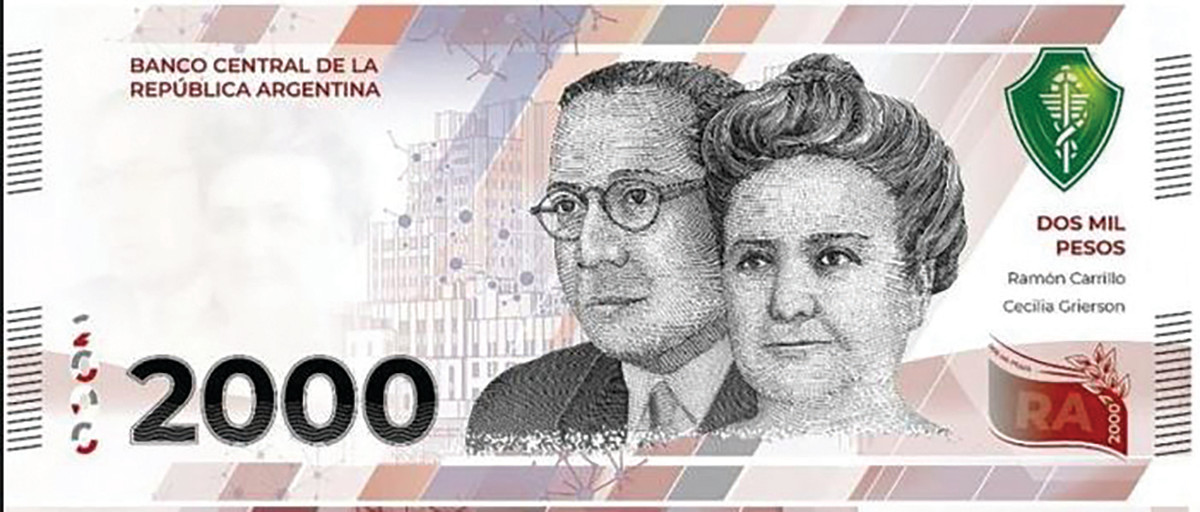- RICHARD GIEDROYC | AUG 7, 2023
Commentary: You know when your country has implemented terrible monetary policy when your fellow citizens consider the U.S. Dollar a safe haven… Could this be a pre-cursor to the United States currency?

The publication Central Banking reported on April 27 that Argentina was importing its bank notes from several countries. On May 22 The Guardian newspaper reported Argentina’s newest and highest denomination bank note, the 2,000 peso, was worth $4 U.S. in international exchange markets. On June 20 a New York Times newspaper headline read: “In Argentina, Inflation Passes 100 percent (and the Restaurants Are Packed).”
Javier Milei is an Argentine congressman and economist who is the front runner running for president. Milei has been vocal, saying if he wins he will make the U.S. dollar the official currency and “blow up” the Banco Central de la República Argentina or Central Bank of Argentina.
What’s going on here? The peso has suffered the humiliation of being named the worst-performing currency in emerging markets. Since 1970 Argentina has gone through one inflationary crisis to the next one.
The so-called dollar blue is the informal name given to U.S. currency circulating at a rate of exchange significantly higher than that of the official Argentine peso. Argentina removed exchange restrictions on the U.S. dollar in December 2015, resulting in the official exchange rate and the unofficial “blue” rate converging at that time. On April 1, 2016 the exchange rate was 14.4 pesos to the dollar. By July 29, 2022 the official exchange rate was 131.22 pesos to the dollar while the “blue” rate had morphed to 298 pesos to the dollar—an increase of 127 percent.
According to a May 22 Reuters news report, “Argentina’s new 2,000-peso bill, the largest denomination note, went into circulation on Monday, though due to fast depreciation of the currency it is worth only $8.50 at the official exchange rate and just over $4 in commonly used parallel markets. The peso has shed around a quarter of its value against the dollar this year despite strict capital controls that slow its fall. Most Argentines buy dollars in unofficial markets where they trade at over 480 pesos versus the official rate of 235.”
The June 20 New York Times article explains, “Argentina’s financial crisis has a surprising side effect: a flourishing dining scene in Buenos Aires, as residents rush to spend pesos before they lose more value.” This sounds more like a headline you would read in post-World War One Germany than in 21st century Argentina.
In a recent campaign speech presidential candidate Milei said, “The peso melts like ice in the Sahara Desert.” He has proposed closing the Argentine central bank, replacing the nation’s domestic currency exclusively with the U.S. dollar.
According to the publication El País, Argentina has contracts to import bank notes with Brazil, China, France, Malta, and Spain. El Pais reported shipments of 360 pallets of notes from France, and more than 800 pallets of note from Malta, where security bank note producer De La Rue has a plant. El Pais estimates these shipments will amount to 260 million pieces of currency.
For practical purposes coins don’t circulate, so importing more isn’t even on the table. Coins in denominations of 1, 5, 10, 25, and 50 centavos were introduced in 1992. The 1 peso was added in 1994, followed by the 2 peso in 2010. The 1-centavos denomination ceased production in 2001. The last gasp for coins came in 2017 when a new series of 1- and 5-peso coins were issued. Due to inflation a 2- and 10-peso coin were introduced the following year.
In 1970 peso moneda nacional bank notes were replaced with the peso ley at a rate of 100 peso moneda nacional to one peso ley. In 1983 the currency system exchanged at a rate of 10,000 pesos ley to one peso argentine. The austral replaced the peso argentine at a rate of 1,000 PA to one austral in 1985. This was followed by the peso convertible in 1992 at a rate of 10,000 austral to the peso convertible. Until 2001 bank notes carried the legend “Convertibles de curso legal,” indicating the value of the Argentine bank notes was fixed to the same amount in U.S. dollars. These notes no longer circulate.
The 1992 peso convertible was initially comprised of coins as explained earlier and bank notes in denominations of 1, 2, 5, 10, 20, 50 and 100 pesos. A coin replaced the 1-peso bank note in 1994. The peso convertible is still in use, but the latest series of notes introduced in May 2022 is comprised of denominations of 100, 200, 500, and 1,000 pesos. In March 2023 the 2,000-peso denomination was added, using the printing plates meant to be used for a proposed 5,000-peso note.
For now Argentine citizens are coping with inflation through the strategies of buying now while paying later, bartering, bulk buying, hoarding U.S. dollars, or spending as fast as you get it.
More than 65 countries currently peg their currency to the U.S. dollar. Five U.S. territories use the dollar as their official currency. Bonaire, the British Virgin Islands, Ecuador, El Salvador, Marshall Islands, Micronesia, Palau, Panama, Timor-Leste, Turks and Caicos, and Zimbabwe are each independent countries that also use U.S. currency exclusively.